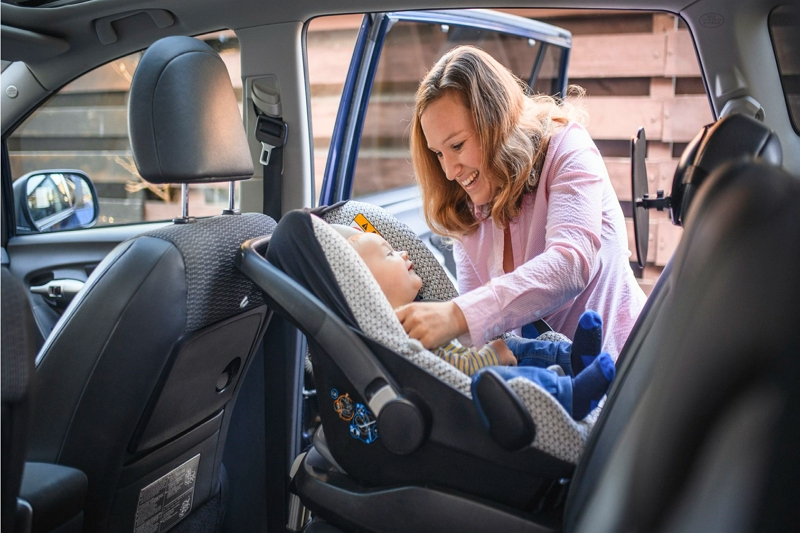How to put a baby car seat together? Putting a baby car seat together can seem daunting, but with the right tools and no prior experience, it is very simple.

Just follow these steps:
Step 1. Place your child in their new car seat to ensure that you have selected one that fits well. If necessary, go back and pick another model as all seats are not universal.
Step 2. Some larger children may need an infant carrier or convertible version of the same brand instead because they will outgrow this type much faster than other models.
This gives them more time before transitioning into a regular-sized booster seat which could be too big for smaller babies after only six months of age!
Step 3. Next, remove any outer packaging materials such as plastic twist ties and so forth from around between the base unit (the part that stays in the car) and the carrier (the part you take with you).
Step 4. Before attaching any of your chosen seat’s components, ensure that all screws or bolts are completely secured. If they aren’t then loosely tighten them before proceeding further into the installation.
Then firmly push down on either side of this piece until it clicks securely into place over an interlocking area which is usually indicated via raised symbols showing where each section should connect.
It must lock fully into position for safety reasons, so if possible use both hands instead of just one while performing this action since little fingers can slip out of place or become trapped easily.
Step 5. It may be necessary to lift the base unit into position if it is too heavy for one person to do so alone, especially with a larger model such as an infant carrier which can weigh up to five pounds in weight and also has more parts than other car seat models available on the market today.
Parents should always refer back to their chosen baby car seat manual before continuing this process since each brand’s design will vary slightly from all others even within the same product line.
How to loosen car seat straps baby Trend
The first step in loosening car seat strap baby Trend harnesses is by placing your thumb on the tongue of the buckle and pulling upwards with your index finger.
Your other hand should then pull down on the shoulder pad while you continue to pull up with your thumb until there is enough room for them to slide through easily.
You can now adjust each side equally so that they hang evenly without being too tight or loose around their shoulders; this will avoid injuries like hip dysplasia due to uneven pressure distribution across the hips as well as head lolling which may happen if one side is extremely looser than another.
The last thing you should do is ensure that the chest buckle tongue has been inserted into its proper slot at its belly button level.
Do not forget to always refer to the car seat manufacturer’s handbook for specific instructions on how your baby Trend should be installed by best practices and safety guidelines before you take them out of the vehicle.
What’s the difference between Resize and ISOFIX?
ISOFIX is the international standard for child restraint systems. It’s a system that provides safety, ease of use and comfort for your baby when travelling in cars. The ISOFIX label on car seats shows you which models are compatible with an installation using this system.
This does not mean they all have to be installed with ISOFIX attachments; some restraints can also be secured via seat belt or top tether strap (or both). You will find advice about what is best depending on your vehicle type below:
* Make sure the car seat matches the seating position where it will be used
* If possible, place rear-facing infant carriers behind passenger side front airbags
* Use top tether straps if available
* Secure smaller boosters with outboard seat belts if possible
* Keep heavy items to the rear of a vehicle
What does plus tested mean for car seats?
Car seats are tested for a combination of safety, security and reliability. When you see plus tested it usually means that the car seat has passed three additional tests to up strengthen its product.
These tests could be anything from impact testing to vibration or even noise level. If your child is in this car seat they will have benefited from these extra testings because their car seat should perform better than one which hasn’t been through them!
It doesn’t mean that other cars seats aren’t as safe but if you want peace of mind (and who wouldn’t) plus testing might well make sense for you!
How are car seats tested in the UK?
If you need to buy a new car seat, your child’s safety must be the number one priority. Car seats are tested in different ways and with various methods, but most of them are given certification by testing laboratories after they have been found to pass certain requirements for performance.
The process includes determining if they meet all federal standards, which vary depending on their age or weight category. These approved tests help parents feel confident that they are buying the safest product possible when they purchase a child restraint system (CRS).
